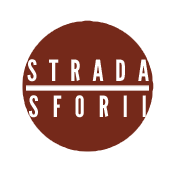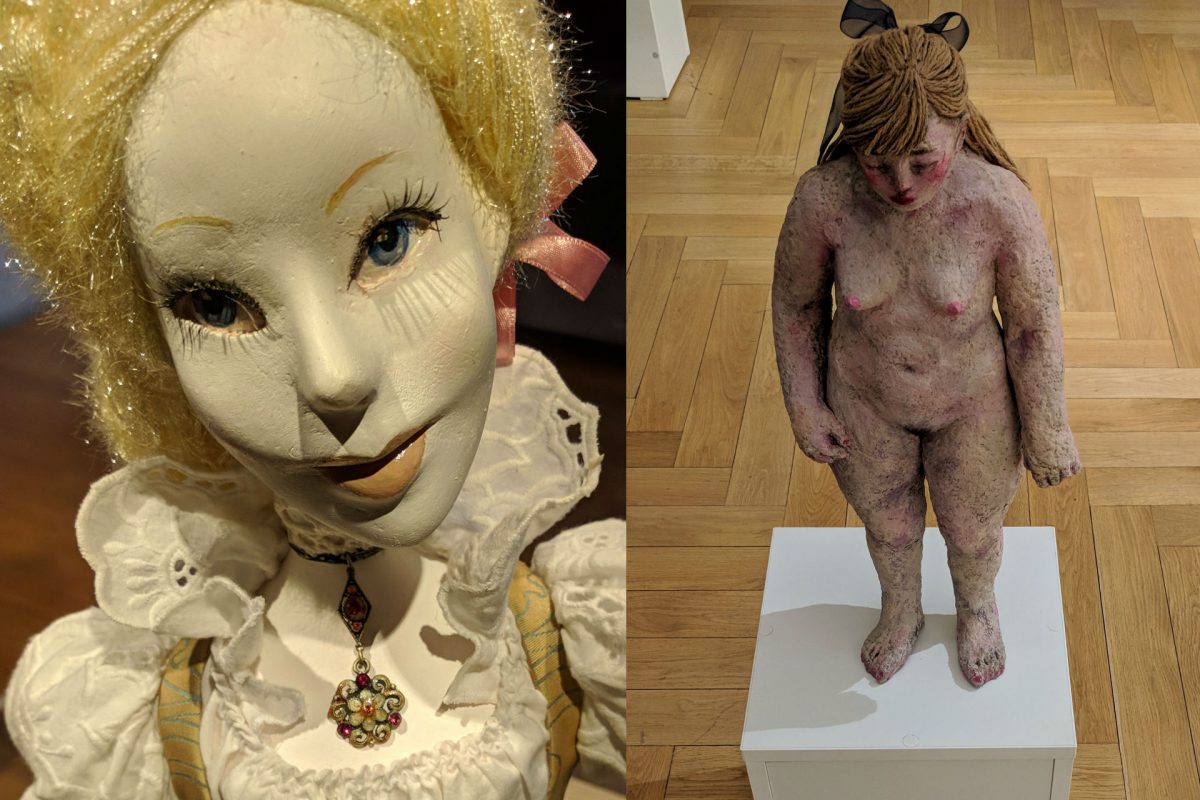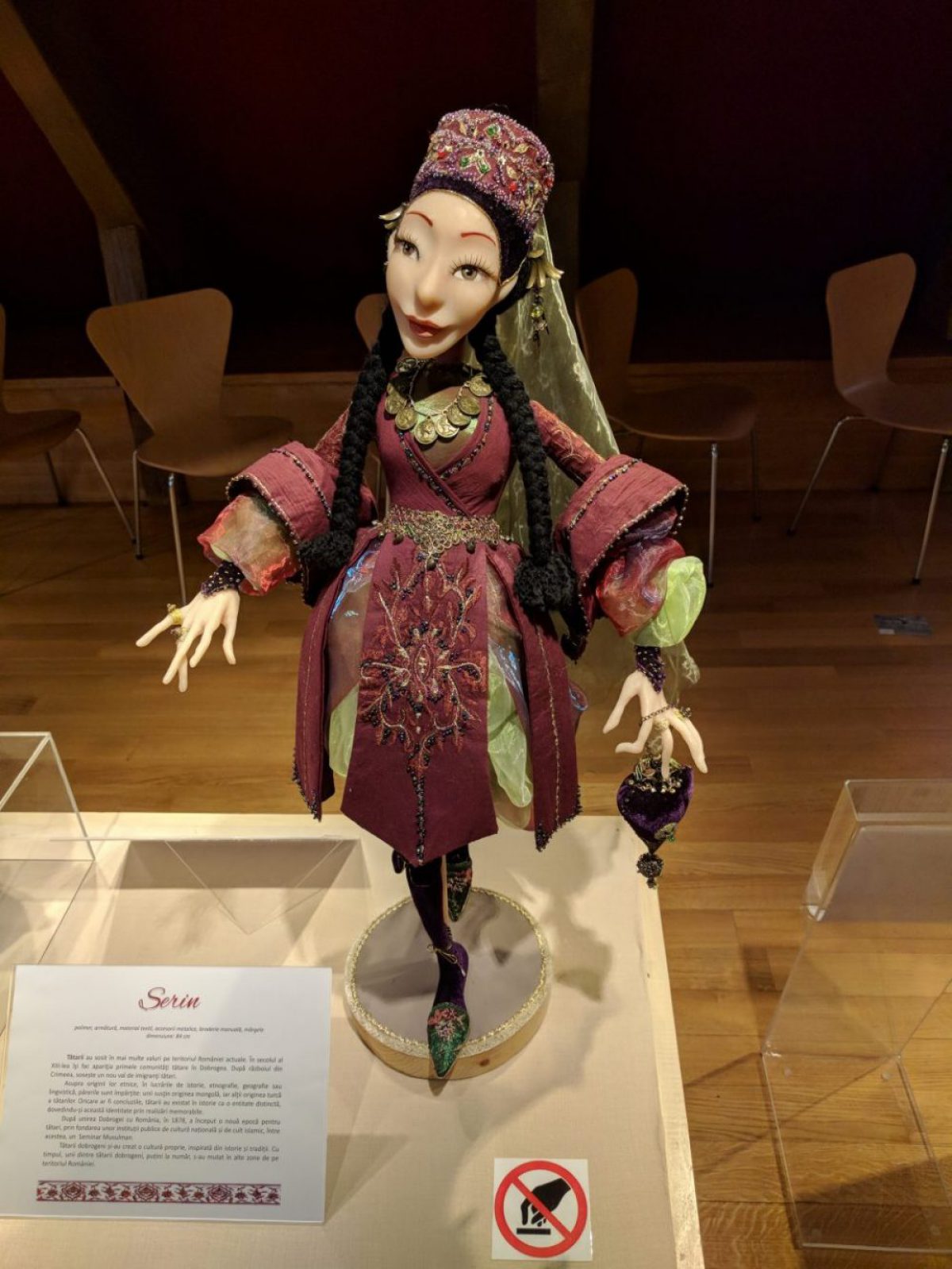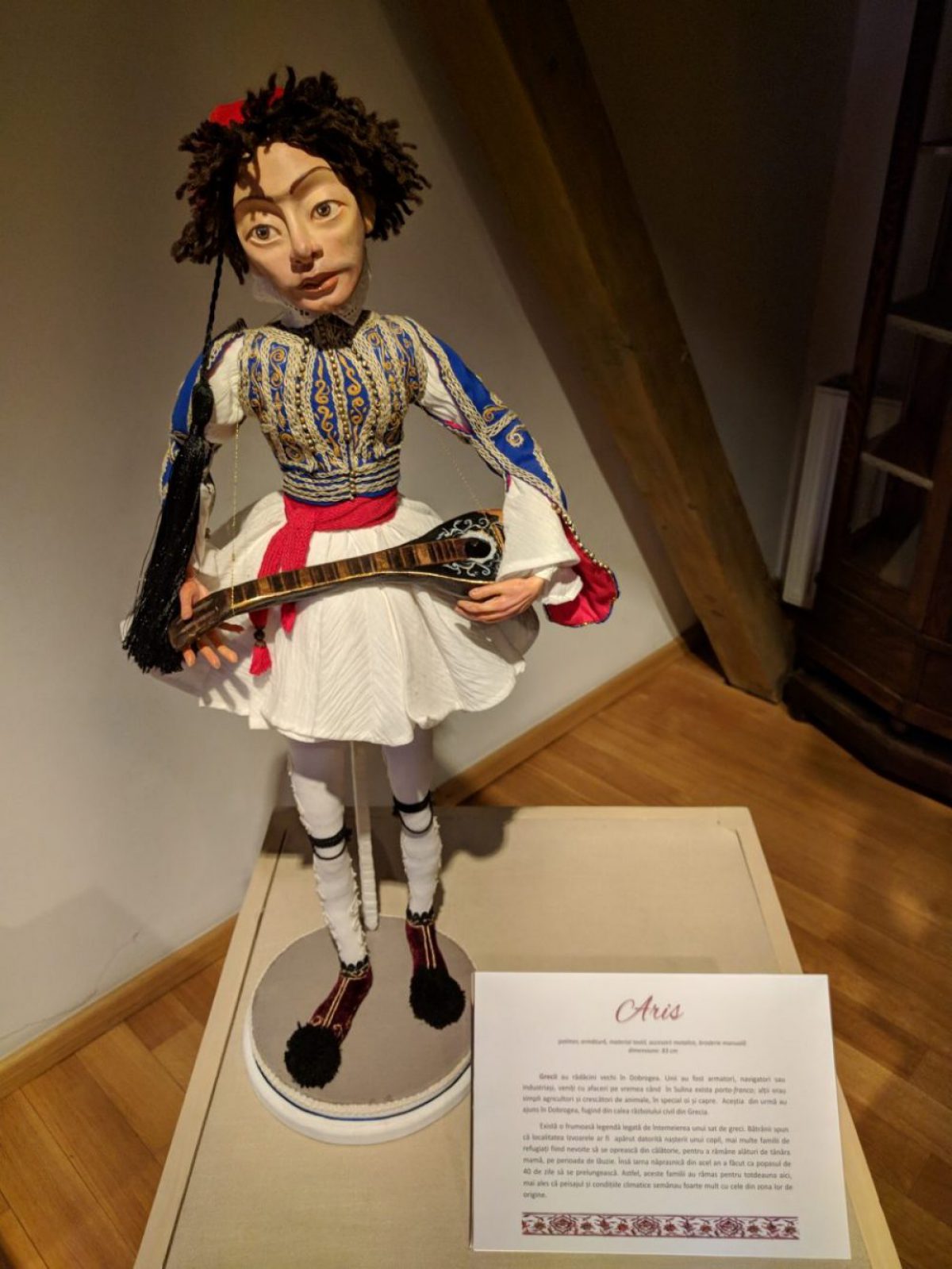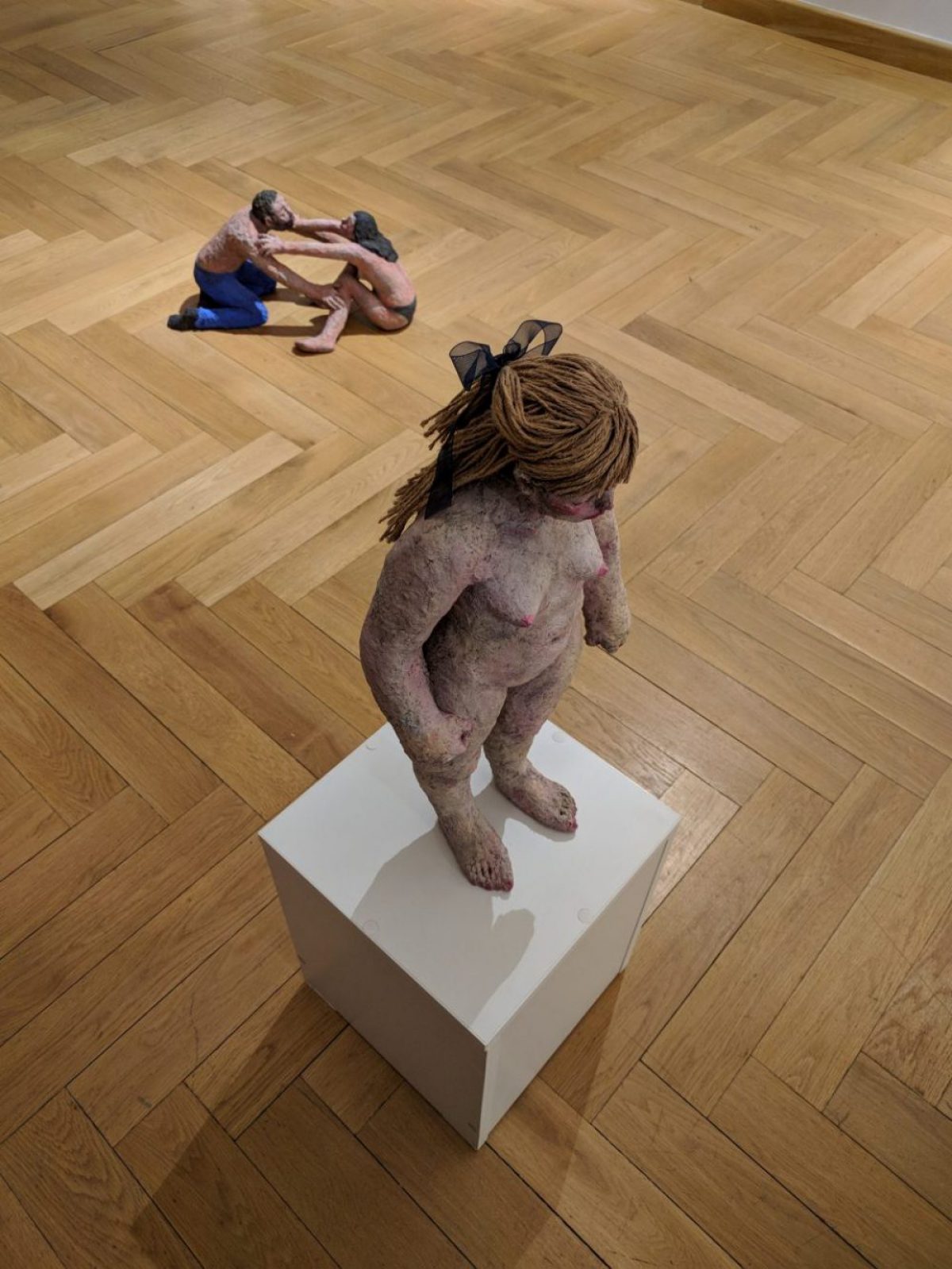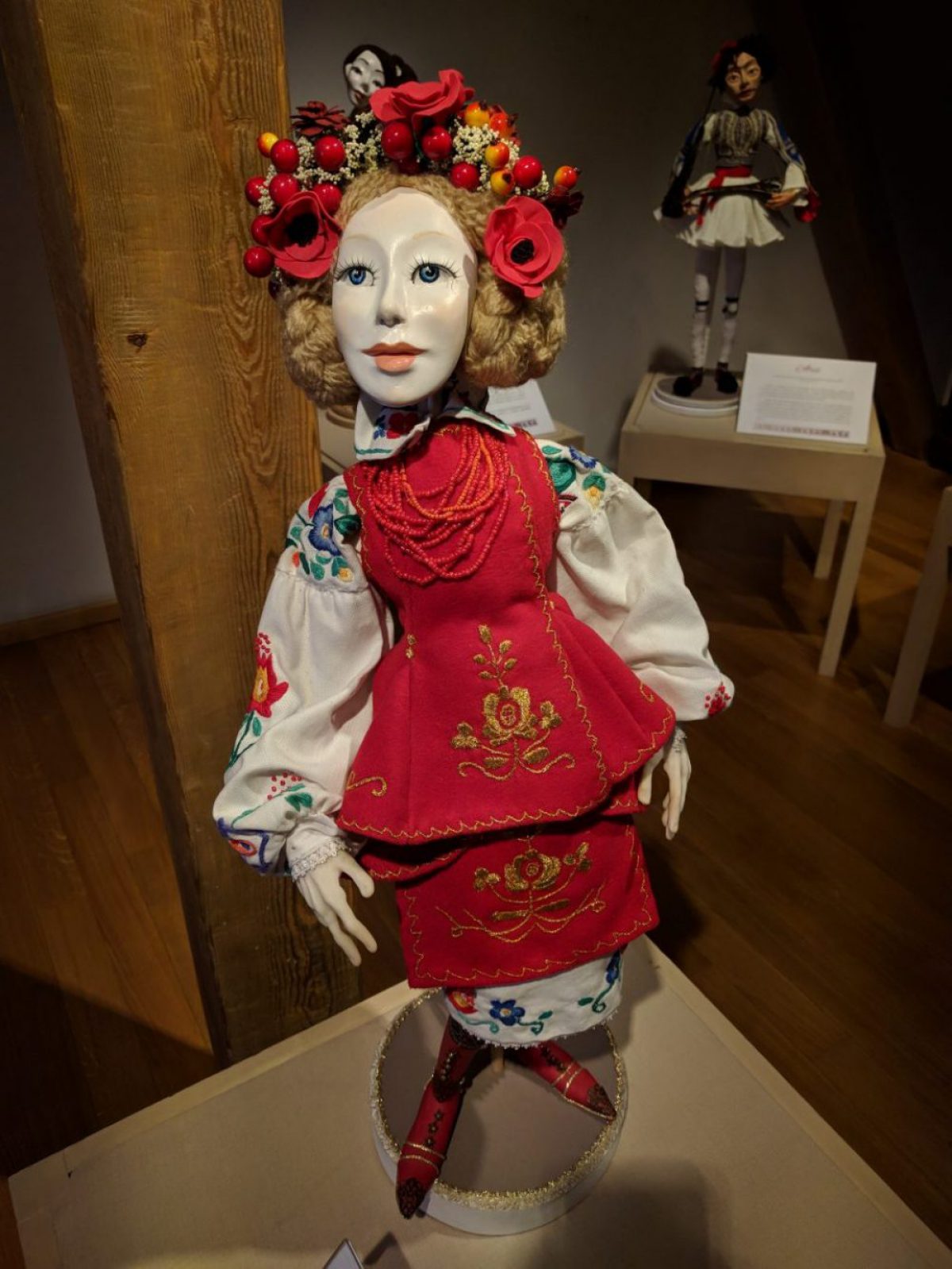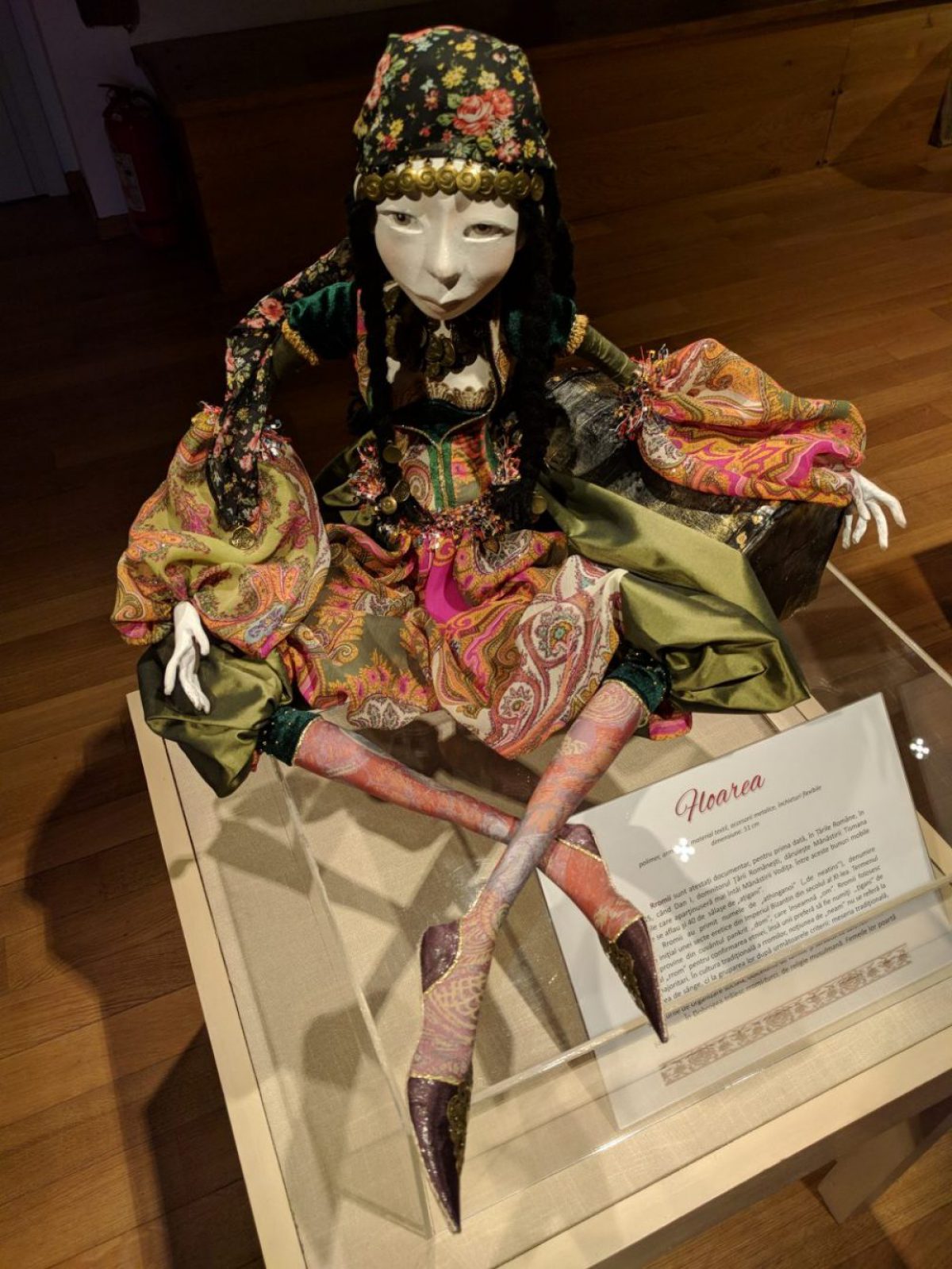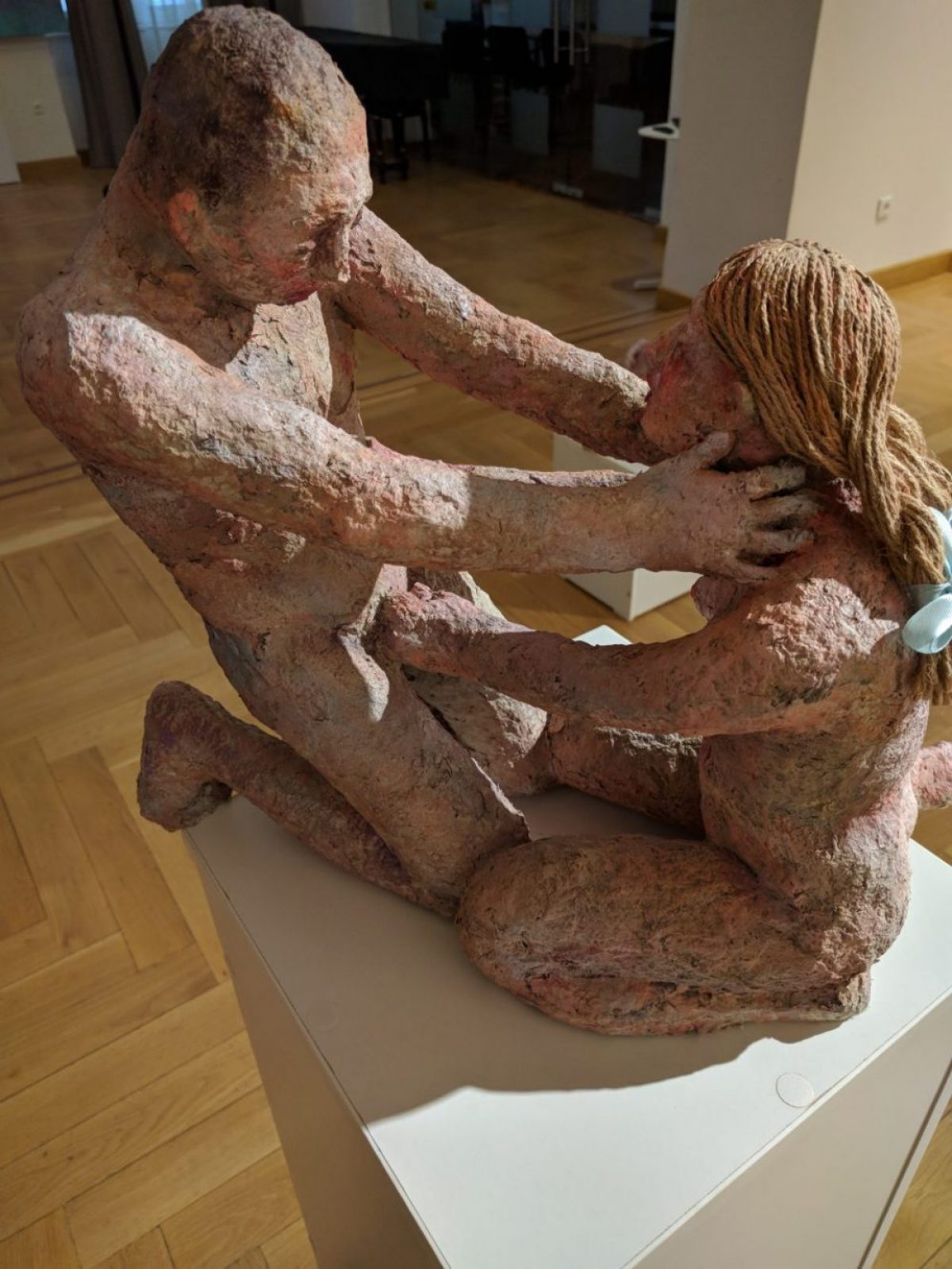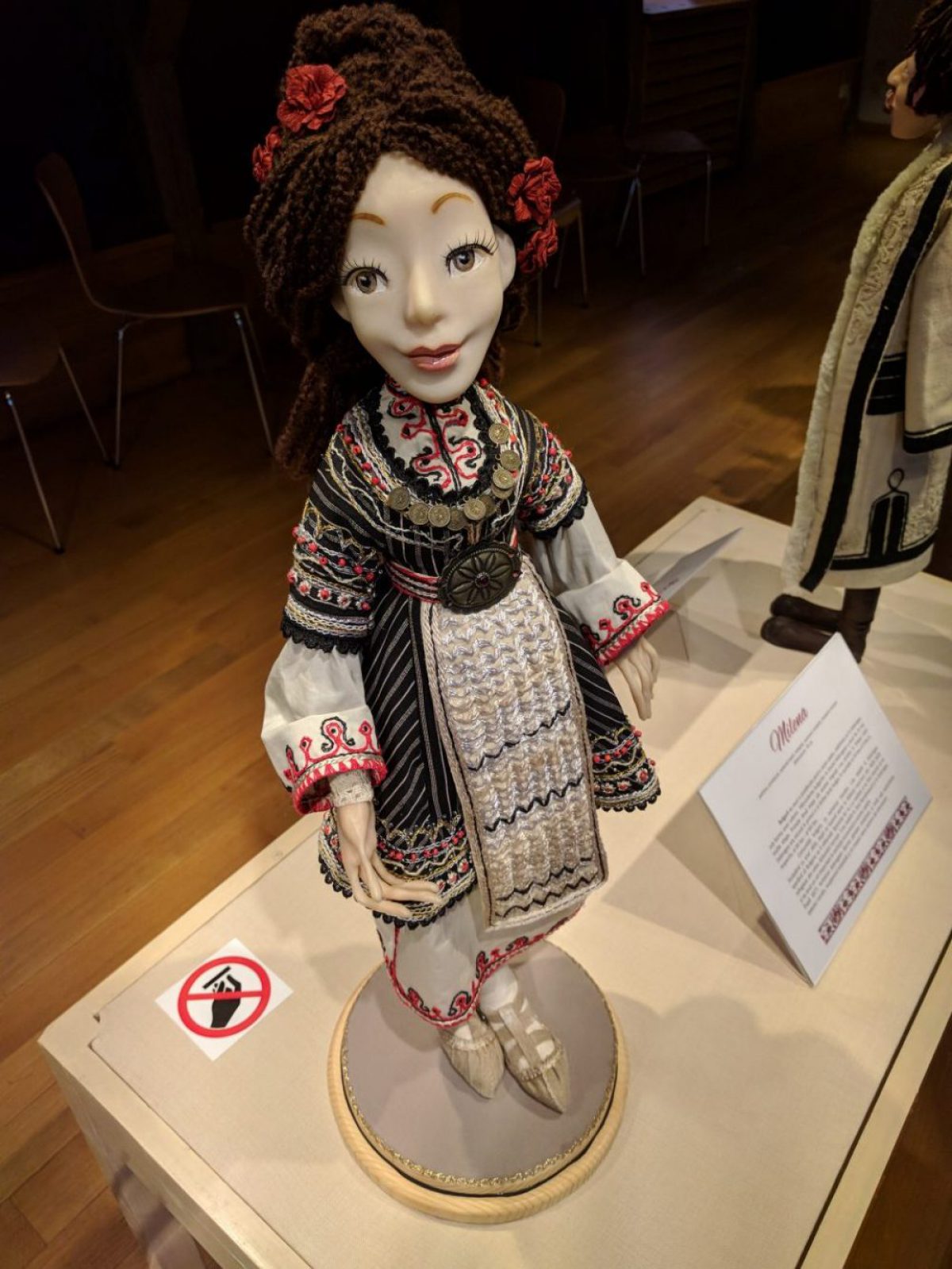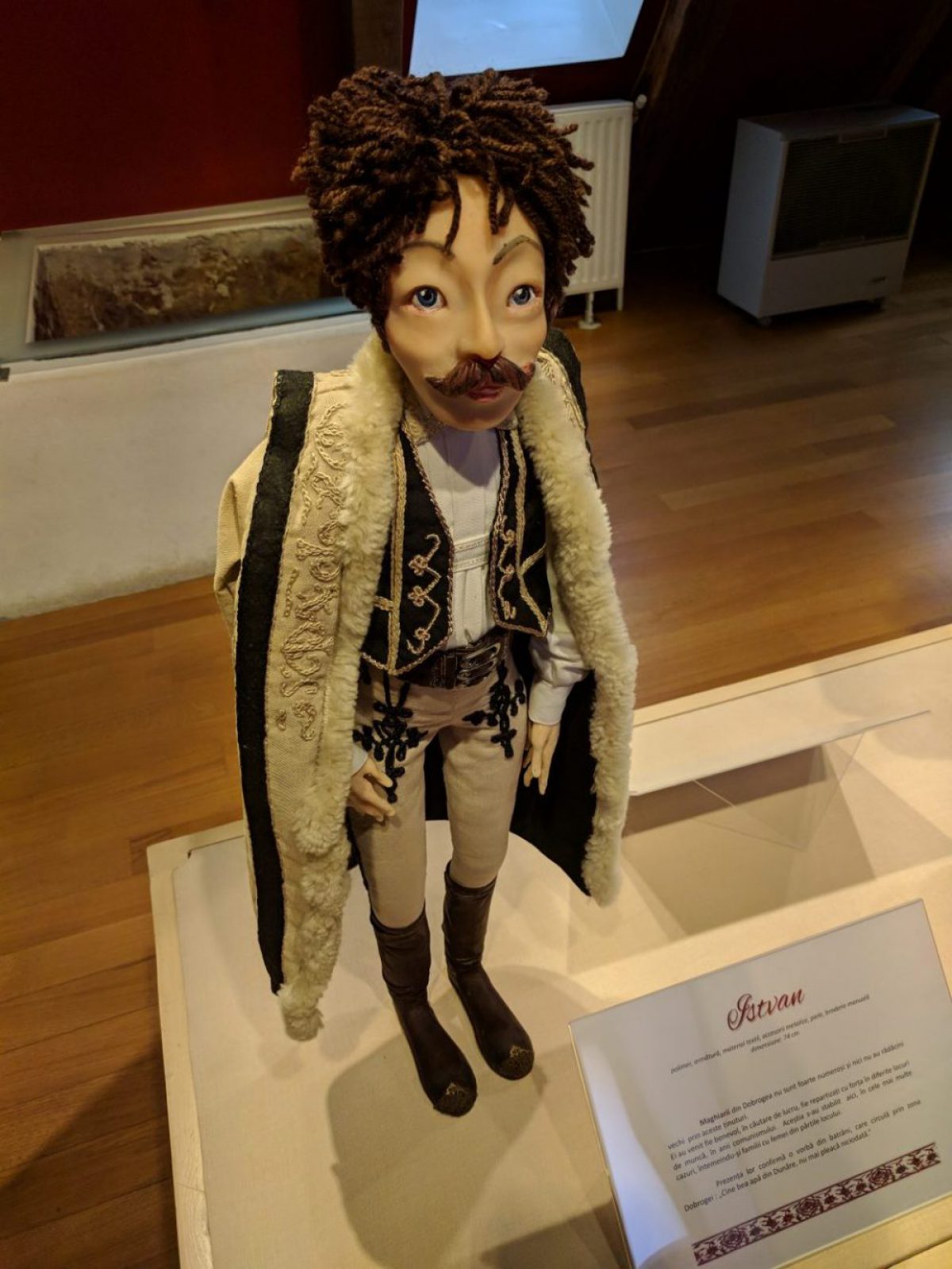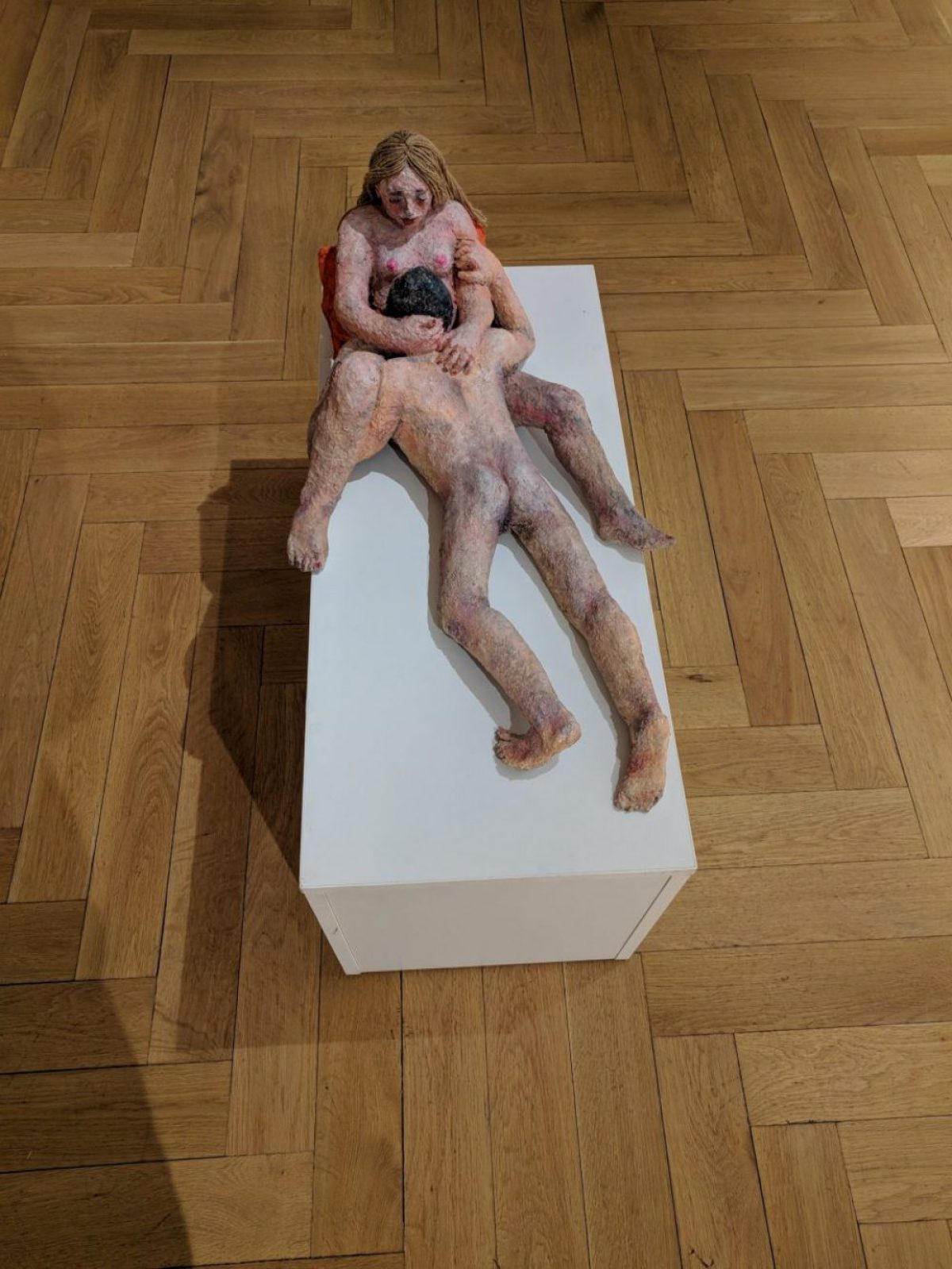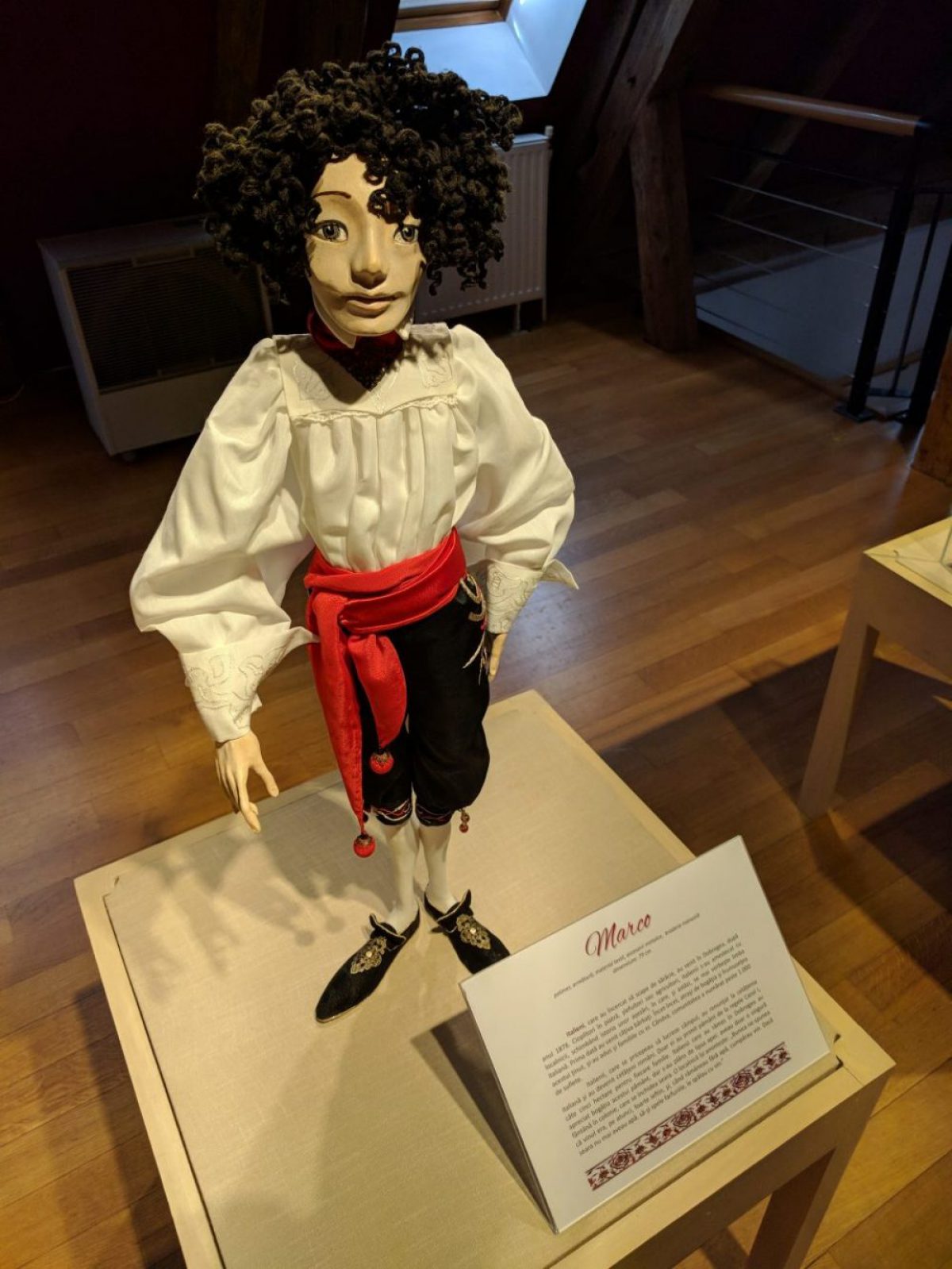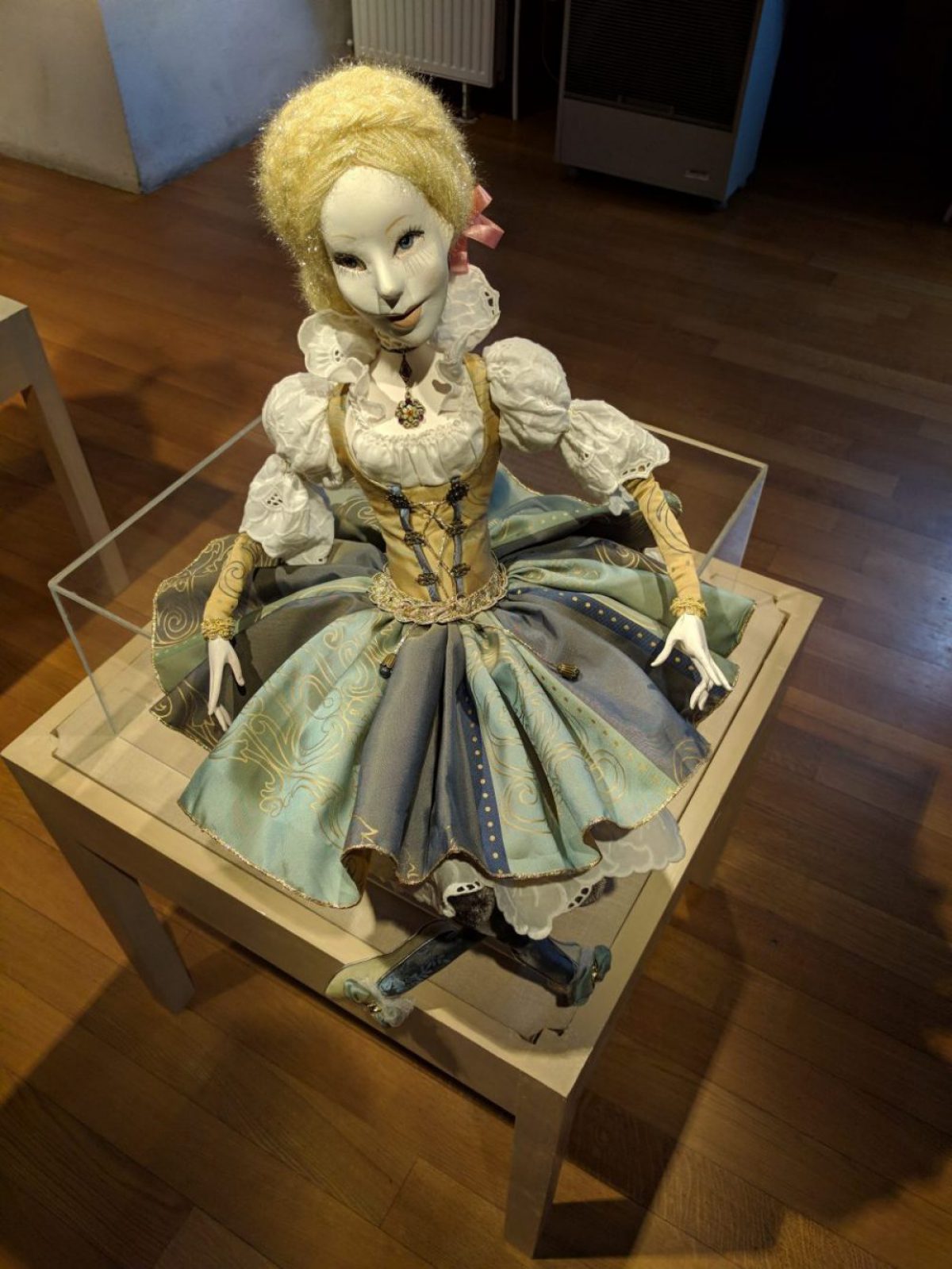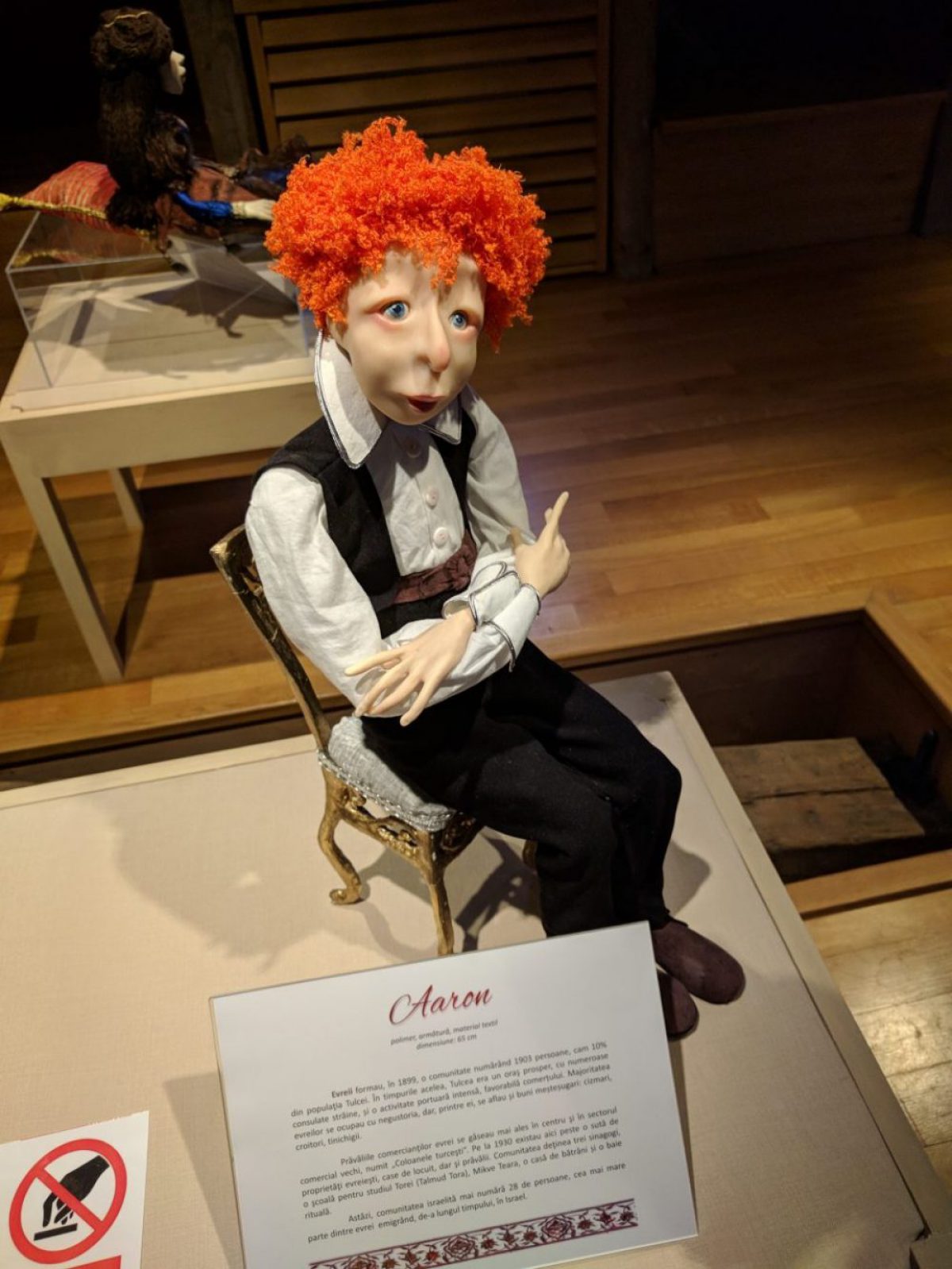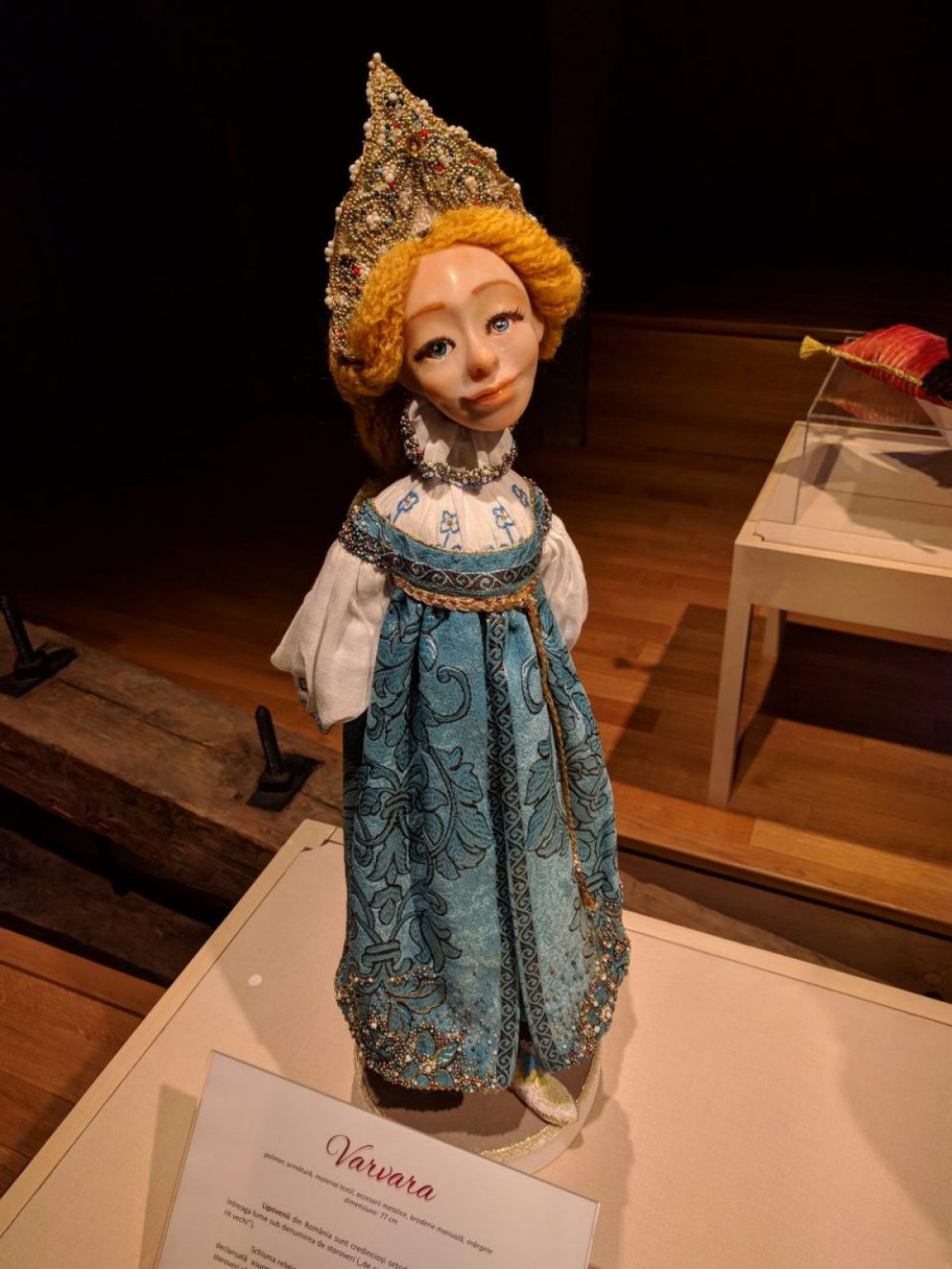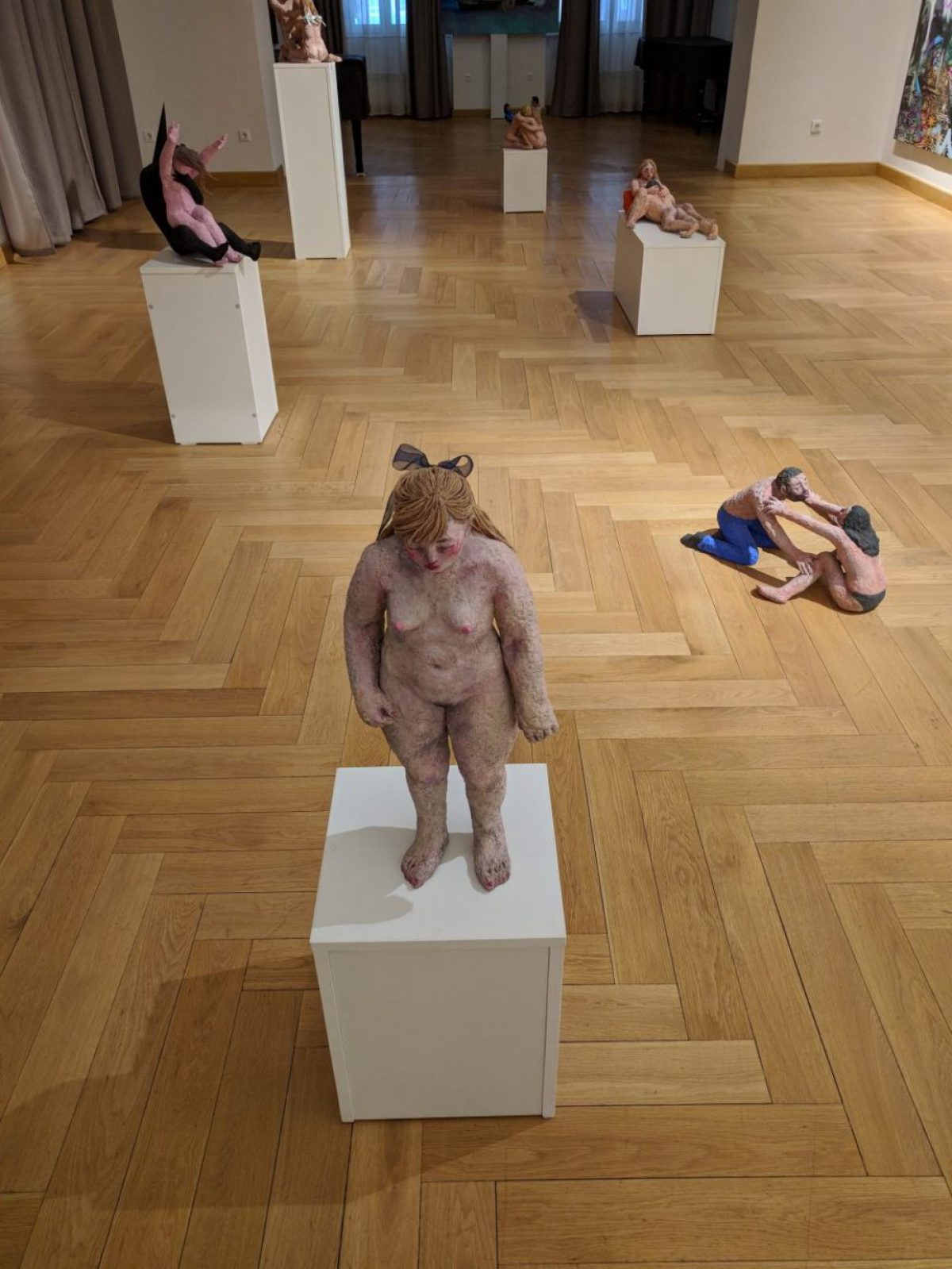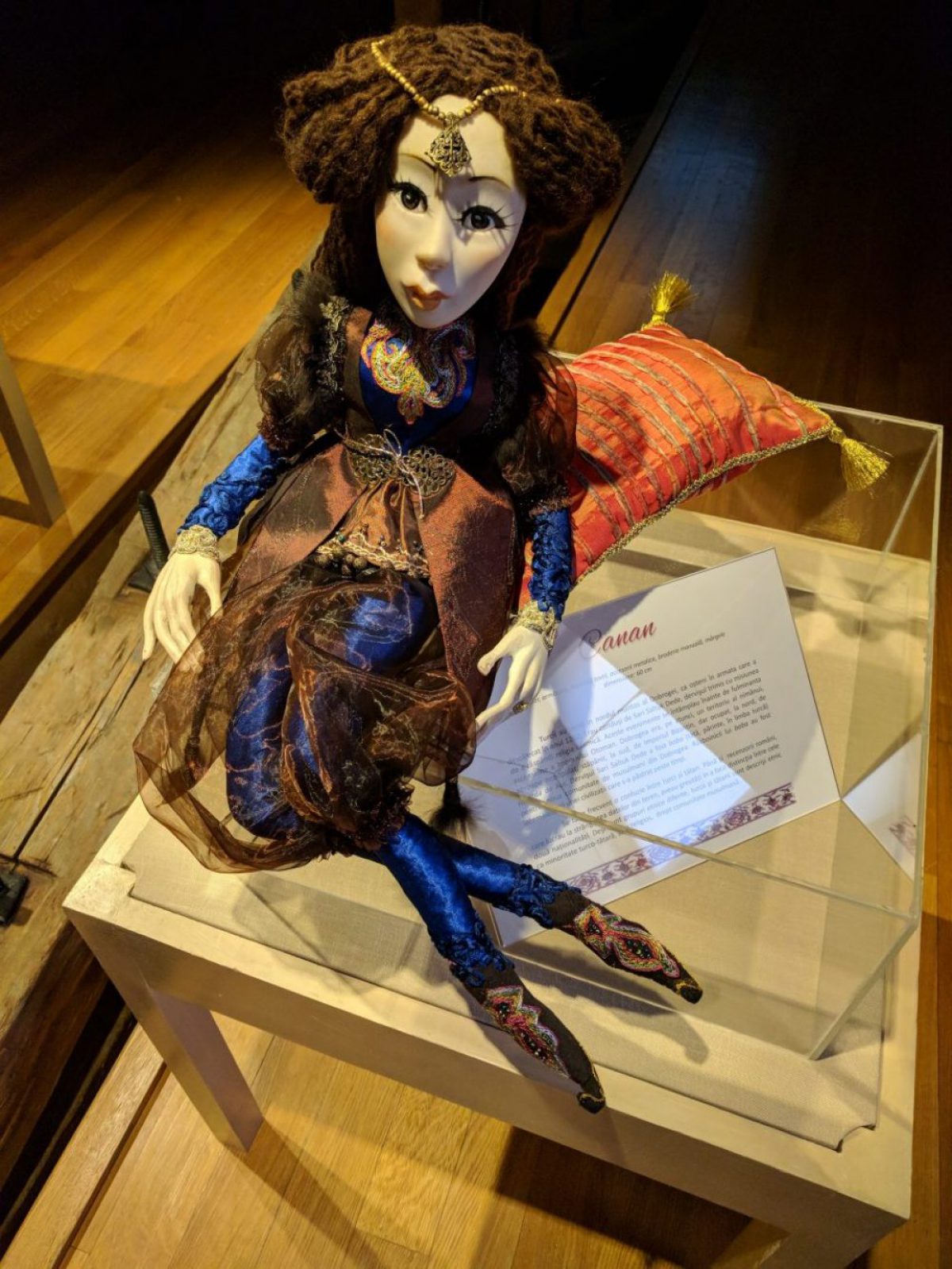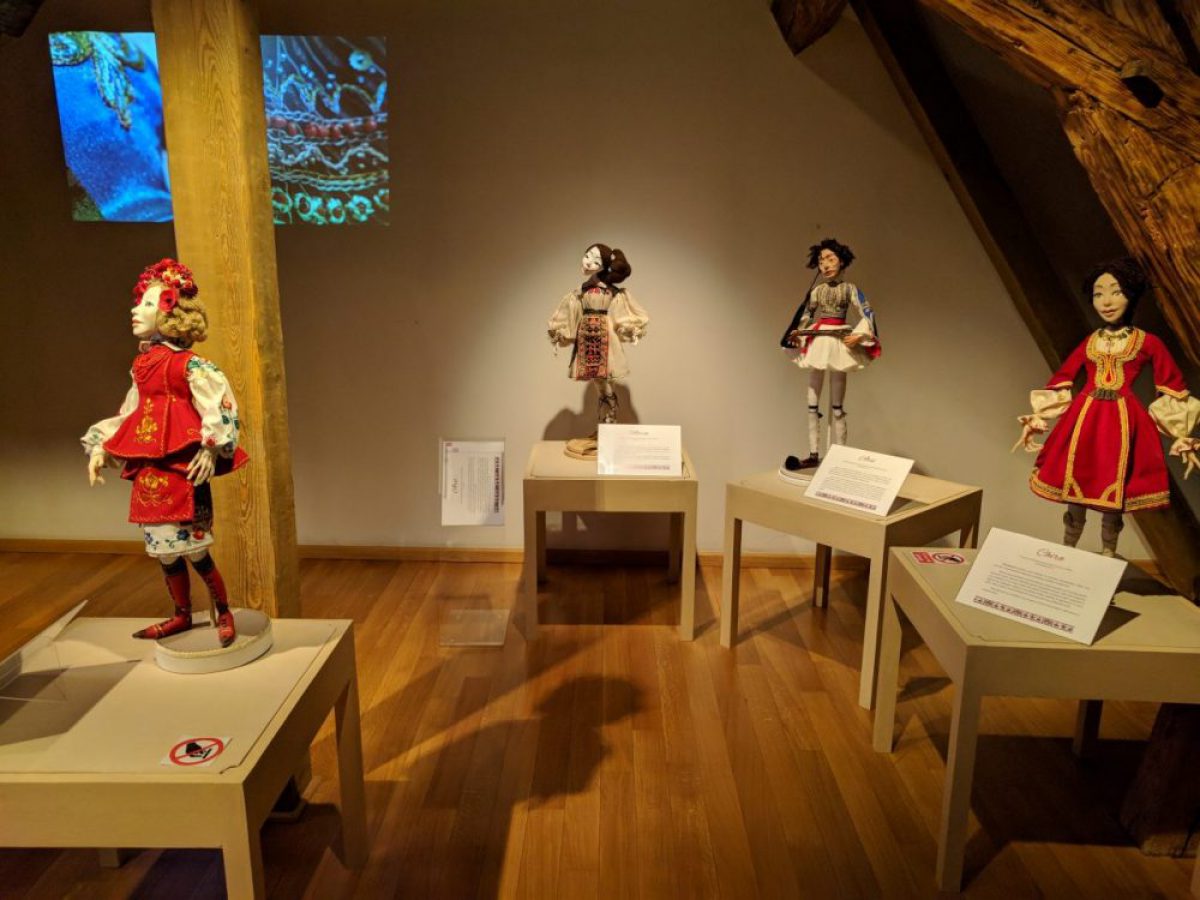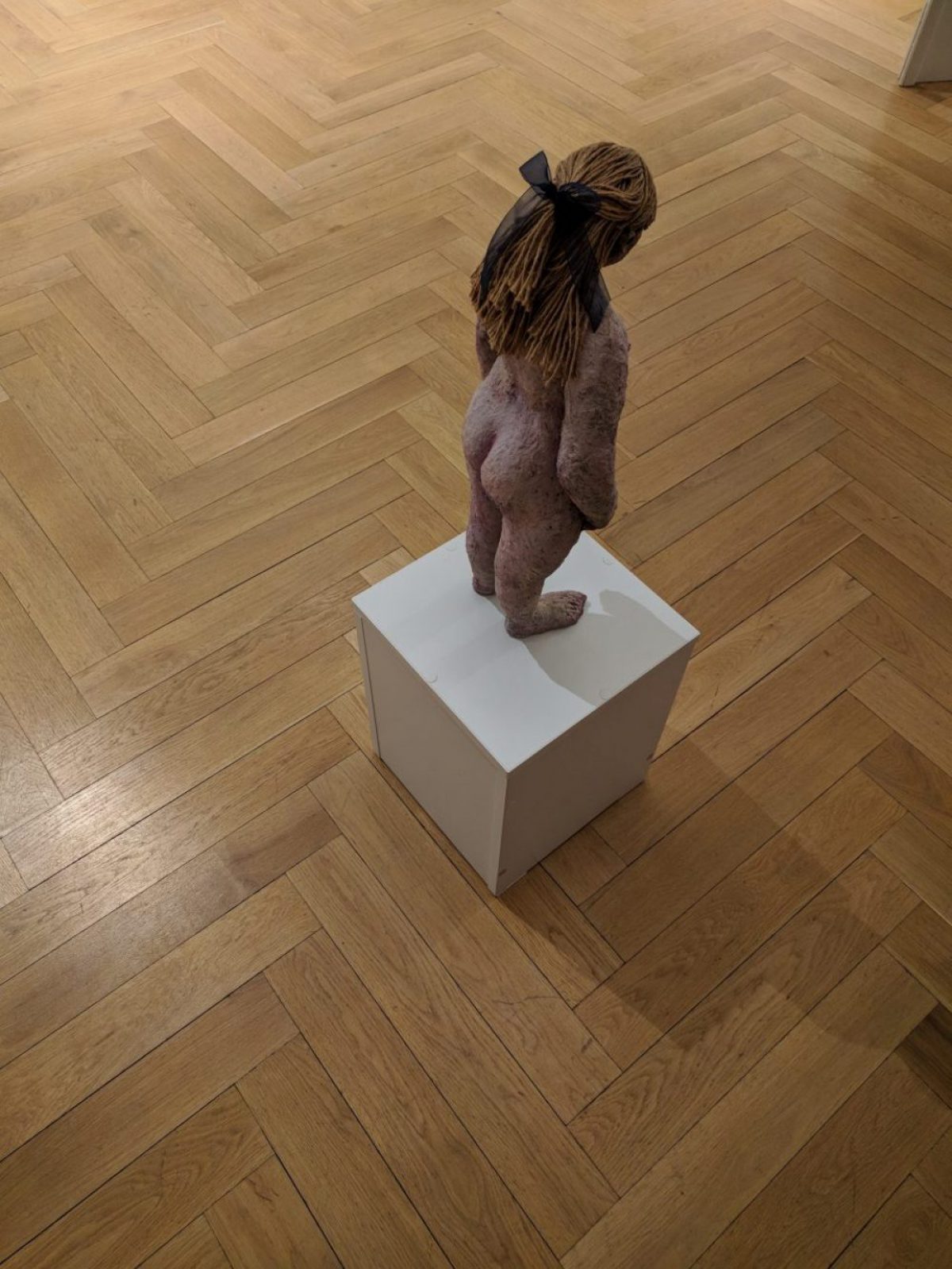Elena Orbocea’s ‘Dobrogea Multiethnic Space’ versus Alina Marinescu’s ‘Out of Love’
Two female artists from different generations, two concurrent exhibitions, one city, Brasov, Transylvania, Romania.
Both artists express different, if not opposing concerns with their subject matter while pursuing a very similar approach to form: the use of puppets made of papier-mache and/or resin.
Our mind is not only attuned to identify patterns and connections, but also to explore conflicts between them, that don’t inhabit the same space nor time. In this case, are the archetypes or the relationships a micro or macrocosm? Which is which, which supersedes the other in importance?
Have we got to a point where archetypes past are only preserved for their ethnological and historical value (Elena Orbocea)? Do we do not or cannot embrace them anymore, more than reminisce of their presence?
Have we as individuals been stripped or released of our archetypal belongings only to have them replaced by a materialistic mindset, where we belong just to ourselves and just, in search of freedom and love (Alina Marinescu)?
Stranger still, when the archetypal element with its story and history (Elena Orbocea) is removed, the naked body appears to be choked by a sense of guilt, of un-accomplished vulnerability towards the higher self (Alina Marinescu) which questions in time any sense in the release from the ‘uniformal’ archetypes. The promise modernism, the new world, ‘the American way’ made, in the end, left us barren of any archetype to embrace ourselves – yet obsessed with individuality, personal space and consequences (Alina Marinescu).
Postmodern consumerism in this landscape seems the logical choice which turns us into similar strangers without any relevant histories to share in a relationship, hence the loneliness. This opposed to the archetypes past, too tied to the rich stories and histories of the land that we but still recognise, in our denial to embrace them.
Shortcomings, Orbocea is too concerned with the postmodern appropriation of archetypes, in their full detailed splendor which ignores the relationships in between and may have been problematic in Dobrogea. While Marinescu struggles to go beyond what may be pleasurable and dangerous to begin and end with, but what ultimately remains perpetually unfruitful in modern relationships.
Find our more about the artists:
- Elena Orbocea : Blog :: Reviews, interviews and forthcoming exhibitions
- Alina Marinescu : Instagram :: Illustrations, exhibitions and personal
